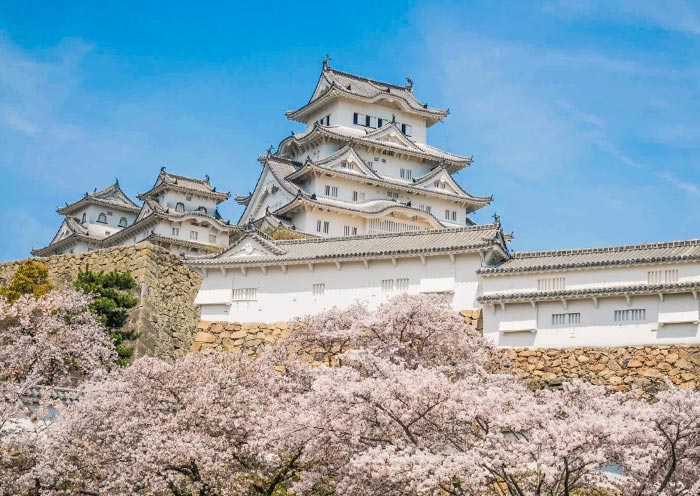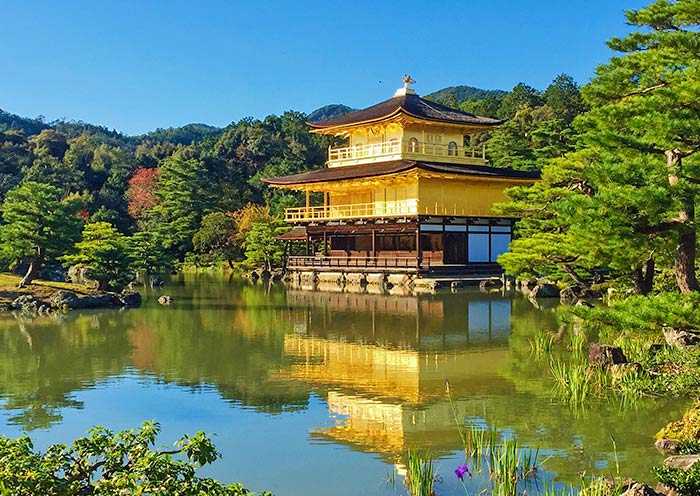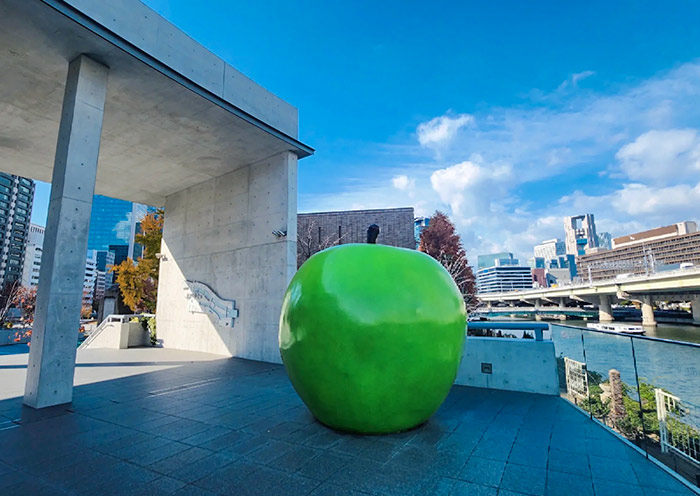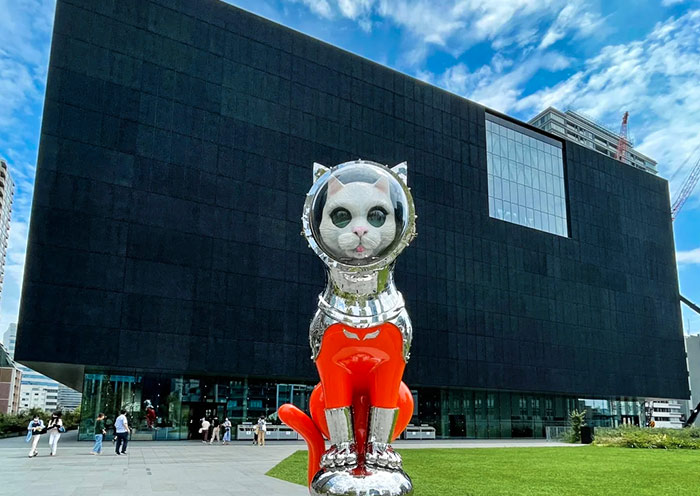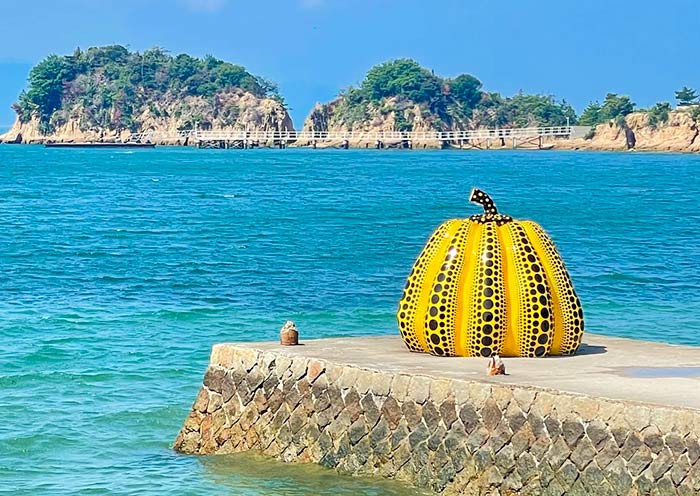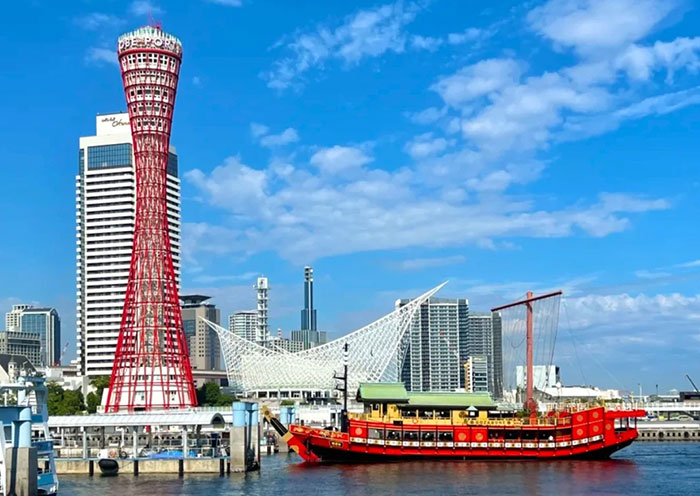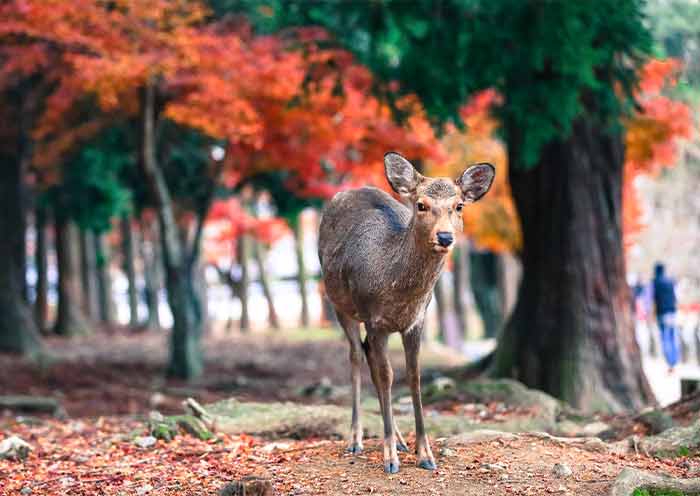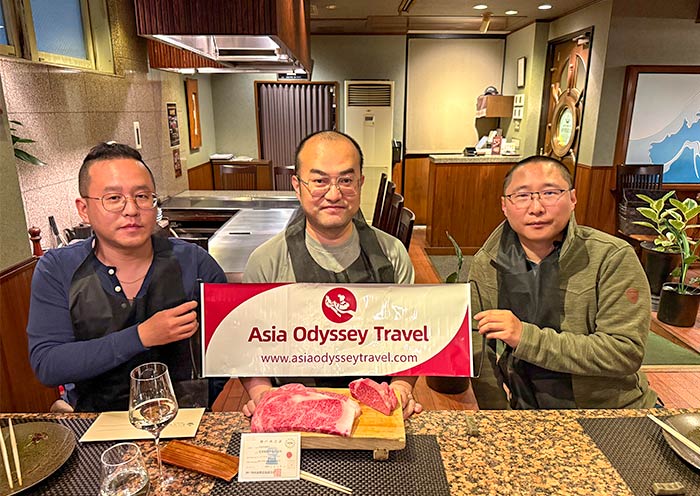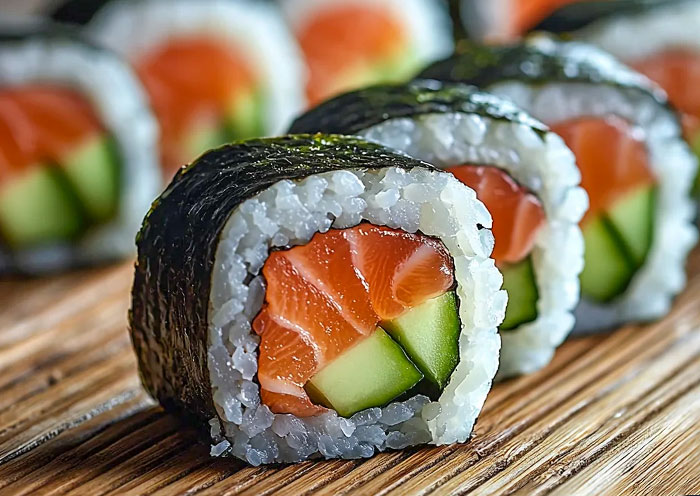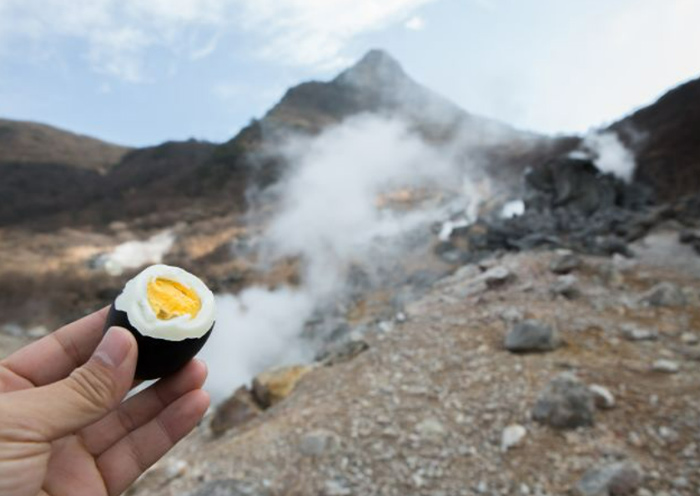8 Days Japan Architecture Tour - From UNESCO Sites to Tadao Ando’s Art Island
From
USD Request![]()
- This is the price per person, based on a group of 6 people, 4-star hotel accommodation, and travel during the regular season.
- Early-bird rates apply to bookings made at least 6 months prior to the departure date.
- The price is subject to change depending on your travel season, group size, hotel class, and potential fluctuations in currency exchange rates.
- Highlights
- Itinerary
- Price
- Trip Notes
- Accommodation
- Photos
- Reviews
Japan Art Tour: Japanese Ancient Buildings, Modern Architecture & Art Museums
Step into a world where ancient traditions meet cutting-edge art. Our 8 Days Japan Architecture Tour immerses you in Japan’s soul.
Wander Kyoto’s UNESCO temples - Fushimi Inari’s torii gates, Kiyomizu-dera’s wooden stage, and Kinkaku-ji’s golden splendor. Ride the scenic Sagano Railway through Arashiyama’s bamboo groves. Sip matcha in Uji beside the iconic Byodo-in Temple. Feel history in Nara’s Great Buddha Hall and feed sacred deer.
In Osaka, explore Osaka Castle’s grandeur, dive into Nakanoshima Island, marvel at Tadao Ando’s Children’s Book Forest (Green Apple) and sleek Nakanoshima Museum of Art (Black Cube). Then, feast in dazzling Dotonbori.
Cruise to Naoshima Island, Tadao Ando’s art island, where Chichu Art Museum (Monet’s 5 works of Water Lilies), Benesse House (hotel-museum), and Yayoi Kusama’s Yellow Pumpkin await. Explore Himeji’s “White Heron Castle” and serene Koko-en Garden.
From timeless wood to visionary concrete – experience Japan’s genius in 8 unforgettable days. Book your Japan Art Tour today! It’s a love letter to Japan’s past, present, and creativity.
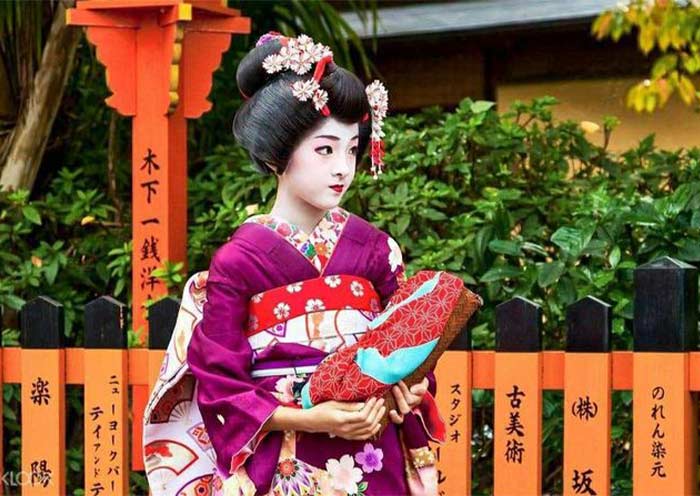
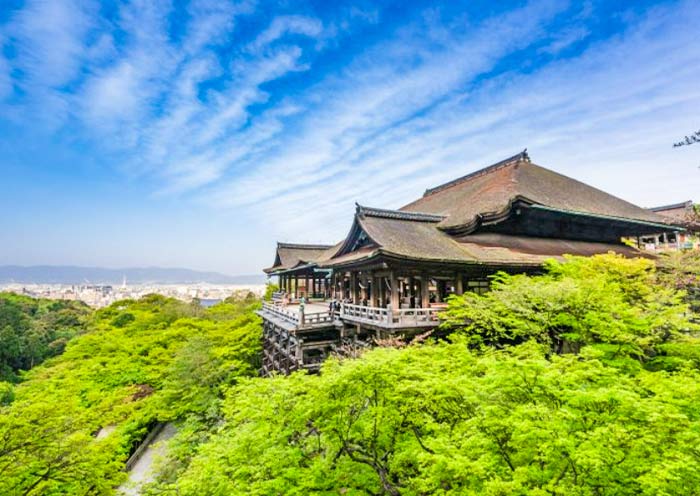
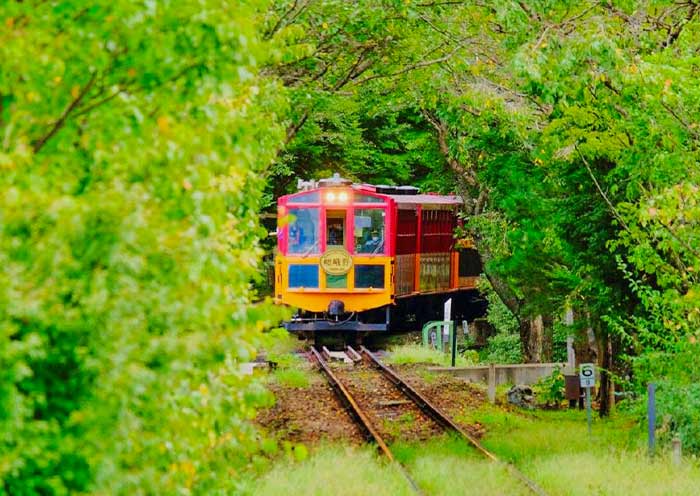
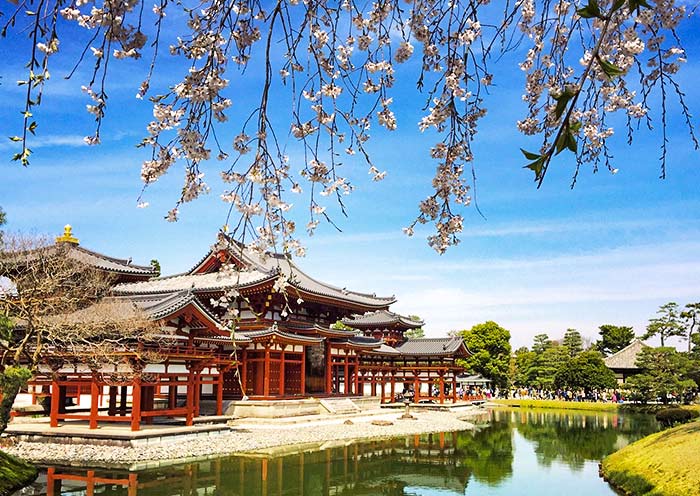

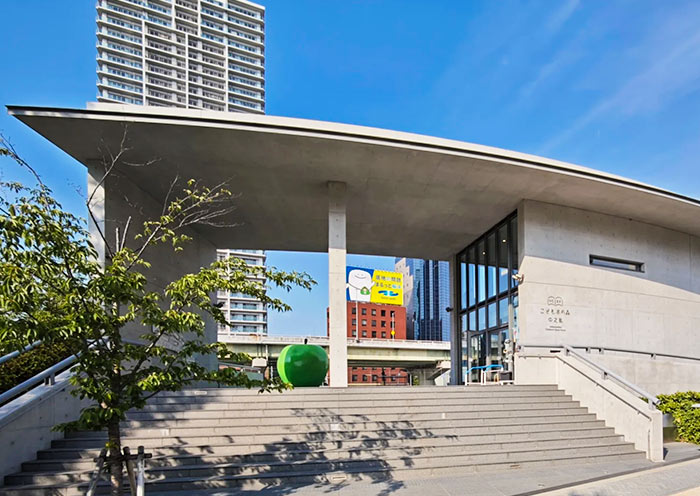
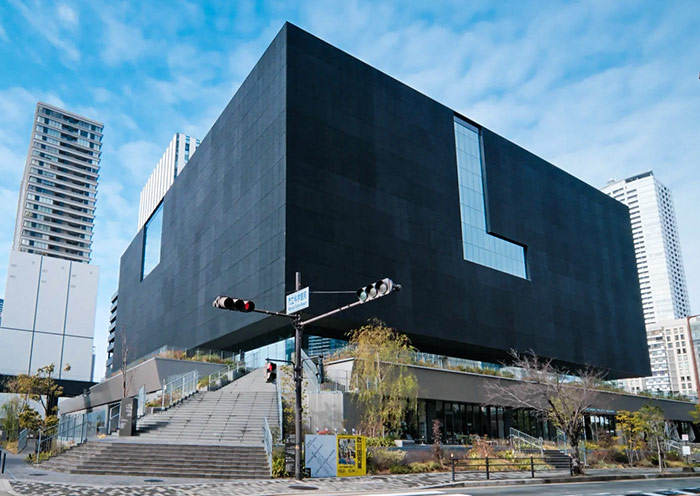
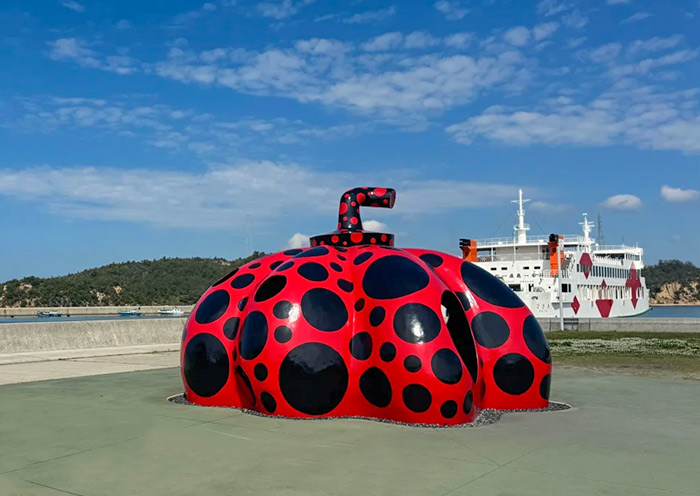
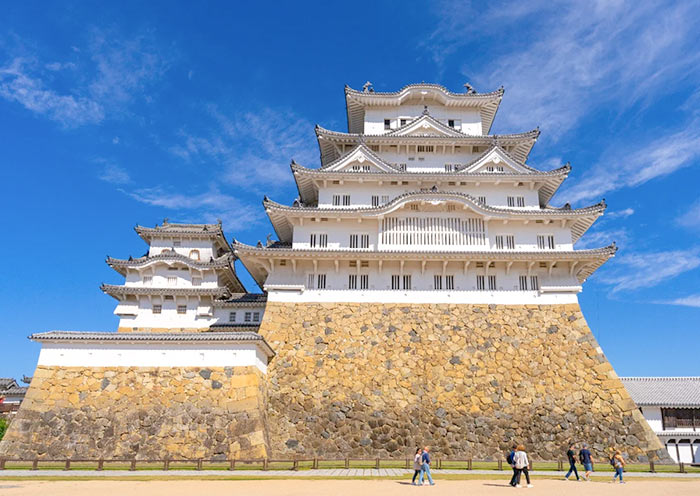
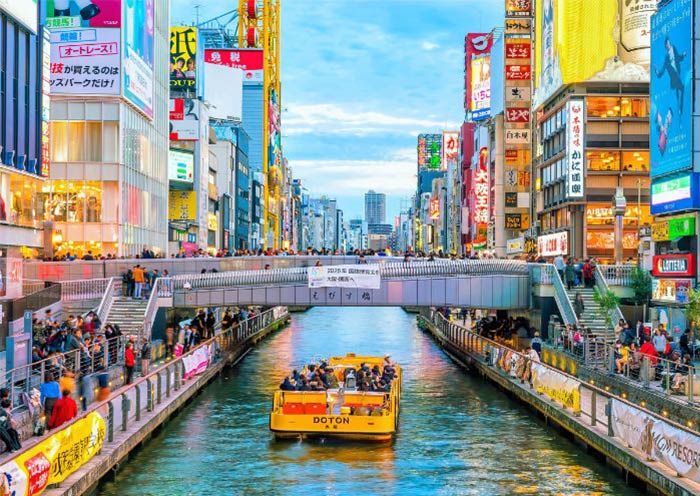
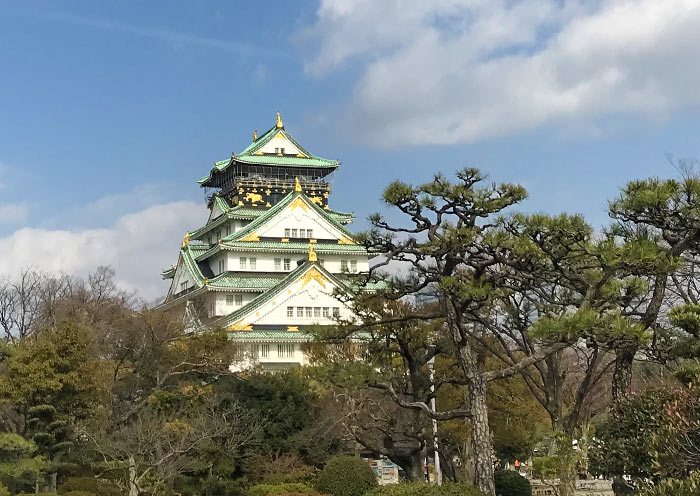
Itinerary at a Glance
Osaka (1 Day)
Airport Pick-up; Transfer to Kyoto
Kyoto (2 Days)
Fushimi Inari Taisha Shrine (World Heritage), Kiyomizu-dera Temple (World Heritage), Ninenzaka & Sannenzaka, Yasaka Shrine, Gion, Kinkaku-ji Temple (World Heritage), Sagano Scenic Railway, Arashiyama Bamboo Grove, Tenryu-ji Temple (World Heritage), Togetsukyo Bridge
Uji (0.5 Day)
Uji Matcha street, Byodo-in Temple (World Heritage), Uji River (Uji Bridge)
Japan Nara (0.5 Day)
Todai-ji Temple (World Heritage), Nara Park, Kasuga Taisha (World Heritage)
Osaka
Transfer to Naoshima
Naoshima (1 Day)
Tadao Ando’s Art Island (Chichu Art Museum, Lee Ufan Museum, Benesse House Museum, Yayoi Kusama's Yellow Pumpkin...)
Himeji (1 Day)
Himeji Castle (World Heritage), Koko-en Garden
Osaka (2 Days)
Osaka Castle Park, Nakanoshima Children's Book Forest (Tadao Ando’s Green Apple), Nakanoshima Museum of Art (Black Cube), City-walk on Nakanoshima Island, Shinsaibashi-suji Shopping Street, Dotombori District
Itinerary Day by Day
Welcome to Japan! Upon your arrival at Osaka's Kansai International Airport, our representative will greet you with a sign bearing your name right at the arrivals gate. Then drive about 1 hour to your carefully selected hotel in Kyoto. Check into your hotel and take some time to settle in and refresh. The rest of today is free for you to explore the local surroundings at your own pace.
Kyoto, located in the Kansai region of the country, was once the capital of Japan. It epitomizes ancient Japan and is famous for tranquil temples, exquisite gardens, colorful shrines, grand imperial palaces, and ornate castles. Boasting 17 UNESCO World Heritage sites, over 1,000 Buddhist temples, and more than 400 Shinto shrines, Kyoto is among the world's most culturally rich cities. It's also known for traditional Japanese arts and practices, such as tea ceremonies, kaiseki dining (a traditional multi-course meal), and ikebana (flower arranging). It remains one of the best places to see geishas, who are traditional Japanese female entertainers known for their refined skills in arts, music, dance, and conversation.
Arrival Ideas:
1.By Flight: Kansai International Airport (KIX) is the main international gateway to the Kansai region of Japan. It hosts direct flights from major cities across Asia, Europe, North America, and Australia. In addition to international routes, KIX offers a wide range of domestic flights connecting Osaka with major Japanese cities like Tokyo, Sapporo, Okinawa, and Fukuoka. Osaka International Airport, commonly known as Itami Airport (ITM), is located closer to Osaka and primarily handles domestic flights.
2.By Shinkansen (Bullet Train): Shin-Osaka Station is the city’s shinkansen station. It can be reached via a short train ride from major cities like Tokyo, Nagoya, Hiroshima, and Fukuoka, making it a convenient option if you’re traveling from other parts of Japan.
Free Time Ideas in Kyoto
1.Visiting Nishiki Market, known as "Kyoto's Kitchen". It is an excellent way to spend your free time, especially if you have an interest in Japanese food culture and local delicacies.
2.Evening Stroll Along the Kamo River: This river flows through the city and provides walking paths with beautiful views. Many cafes and restaurants along the river have terraces, perfect for a relaxing end to your day.
3.Walk the Philosopher's Path: Enjoy a peaceful walk along the Philosopher’s Path, a stone path lined with cherry trees that follows a canal in northeastern Kyoto. This path is especially beautiful during cherry blossom season but offers a serene experience year-round.
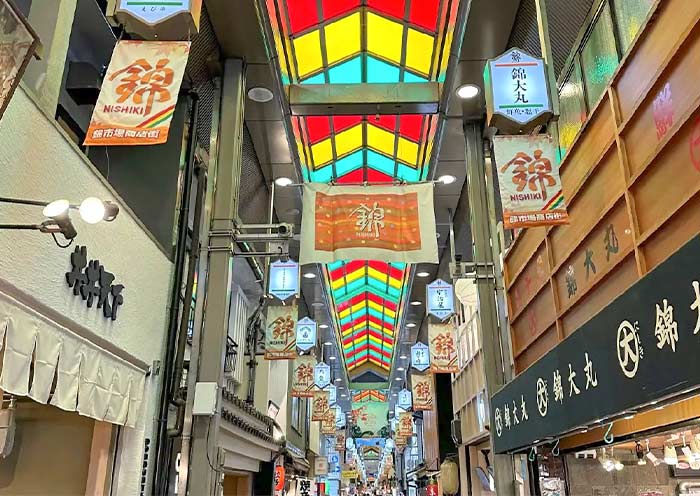
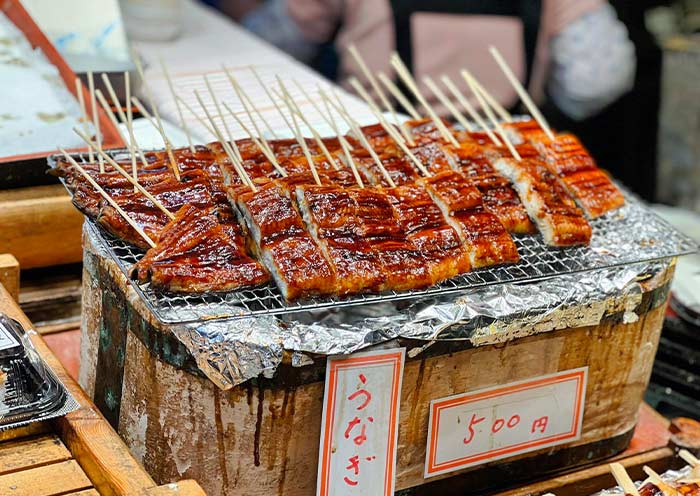
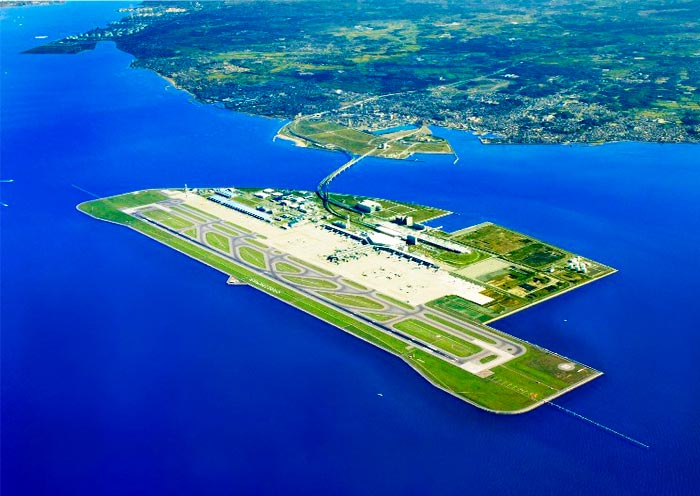
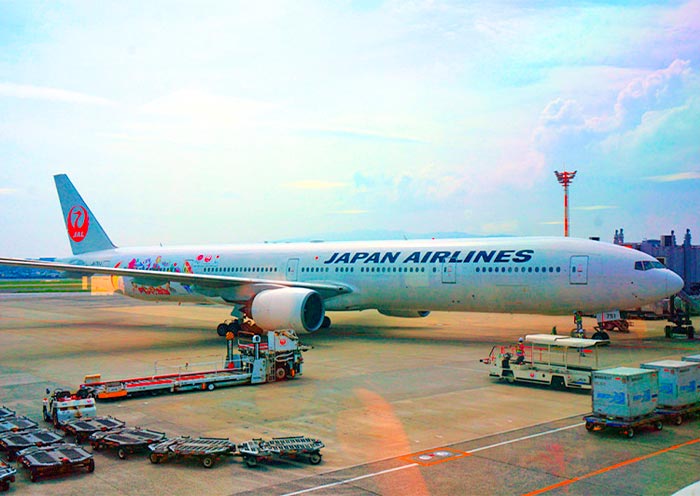
Kyoto, once the capital of Japan, epitomizes ancient Japan. Boasting 17 UNESCO World Heritage sites, over 1,000 Buddhist temples, and more than 400 Shinto shrines, Kyoto is among the world's most culturally rich cities. Known for traditional arts like tea ceremonies, kaiseki dining, and ikebana (flower arranging), Kyoto is also one of the best places to observe geishas.
Start morning in Kyoto bright and early at one of its most iconic sites - the Fushimi Inari Taisha Shrine to beat the crowds.
Fushimi Inari Taisha Shrine is famous for its thousands of vermilion torii gates, known as Senbon Torii (“thousands of torii gates”). Layers upon layers of vermilion torii gates line the lush, wooded hillside, forming a seemingly endless corridor. The vibrant orange and black gates contrast beautifully with the surrounding greenery, creating a visually stunning and almost otherworldly path that is highly photogenic.
Fushimi Inari Taisha was founded in the early 8th century (711 AD) and is primarily dedicated to Inari, the Shinto god of rice, fertility, sake, agriculture, and industry. As you explore the shrine, you will encounter hundreds of fox statues. Said to be the messengers of the god Inari, who is associated with cereal grains, these fox statues often symbolize the deity. Many of these fox statues are depicted holding a key in their mouths, which is said to open the granary.
Tips: Hiking to the summit of the mountain and back will take two to three hours, but many people go only as far as the Yotsutsuji intersection because there are fewer torii gates beyond this point. It will take 30 to 40 minutes to reach Yotsutsuji.
Next, visit Kiyomizudera Temple, a UNESCO World Heritage Site. Perched on the hillside of Eastern Kyoto, this temple is renowned for its wooden stage that juts out over the hill, providing stunning views of the city and the surrounding nature. The temple's main hall, constructed entirely without the use of nails, is an architectural marvel. Kiyomizu-dera is also celebrated for its sacred waters, which are believed to have wish-granting powers that draw countless visitors who come to drink from its stream. Don’t miss the Hondo (Main Hall), Jishu Shrine, the Otowa Waterfall, and the spiritual experience of the Tainai-Meguri room.
Tips: The scenery at Kiyomizu-dera Temple is distinctively beautiful in each season, offering a unique charm year-round. In spring, the mountains are adorned with charming cherry blossoms; in summer, they are lush with vibrant greenery; in autumn, they are decorated with brilliantly colored leaves; and in winter, they are filled with enchanting trees.
Then, walk up the well-preserved streets of Ninenzaka and Sannenzaka. These charming, sloping streets are lined with traditional shops and quaint tea houses, offering a nostalgic glimpse into Kyoto's past. As you stroll through these areas, you can shop for unique crafts, sample local snacks, and perhaps stop at a café to relax and soak in the atmosphere of old Kyoto.
Continue to Yasaka Shrine, the guardian shrine of the Gion entertainment district, which dates back over 1350 years. Yasaka Shrine is particularly favored by those seeking beauty and wealth. Visiting this significant Shinto shrine in Kyoto, you may also find yourself gaining some good luck. The shrine is most famous for its Gion Matsuri in July, during which you can witness the procession where the deities of Yasaka are paraded through the city streets.
Adjacent to the shrine, Gion is Kyoto's famous geisha district. Here, you might catch a glimpse of Geisha (Geiko) in their elaborate kimonos and traditional makeup. As you wander through the cobblestone streets of Gion, take a moment to appreciate the beautifully preserved machiya (wooden townhouses), ochaya (teahouses), and exclusive ryotei (traditional Japanese restaurants). Gion is particularly enchanting at dusk when the lanterns are lit and geishas and maiko (apprentice geishas) make their way to evening appointments, making the narrow lanes come alive.
Stay overnight in Kyoto.
Optional Activities:
1.Join a Geisha Experience. It offers a chance to see a performance by a geisha, experience the tea ceremony, and learn all about its artful rituals.
2.Kyoto traditional kimono experience. Wear a traditional kimono and stroll through scenic districts like Gion or around Kiyomizu-Dera Temple. Enjoy photo opportunities and the feel of traditional Japan.
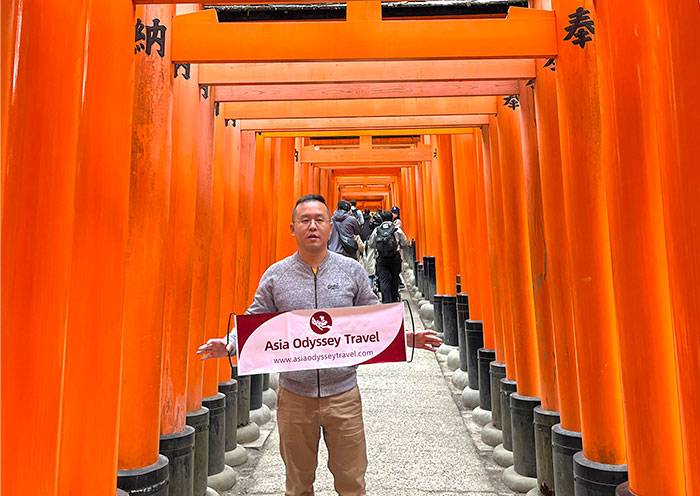
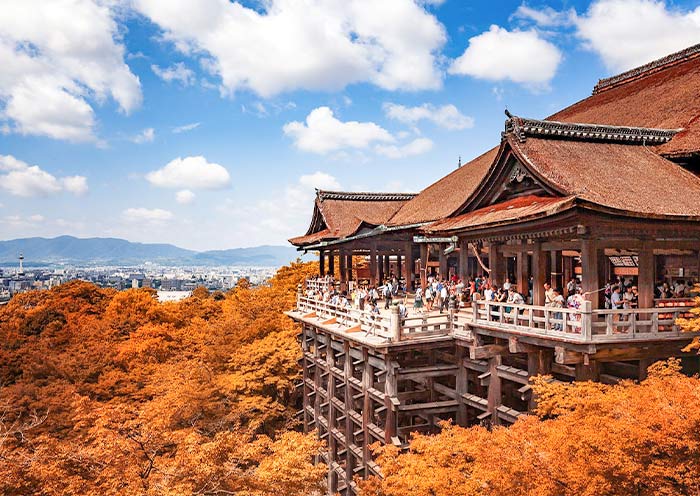
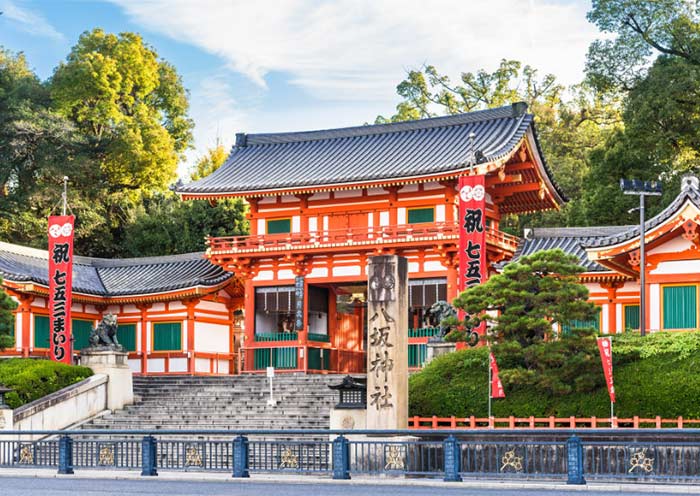
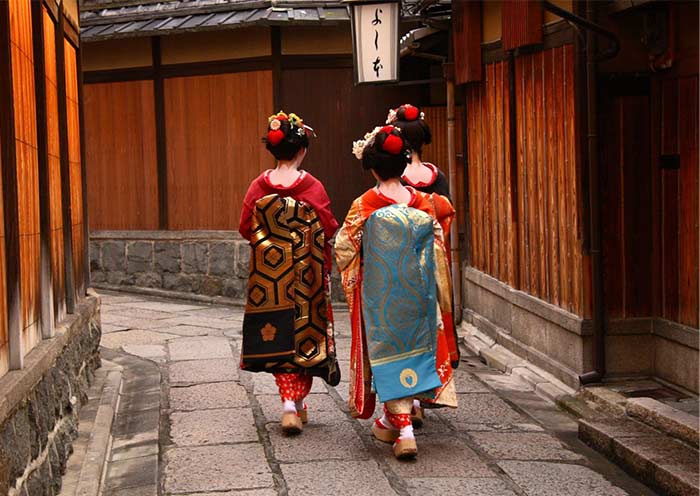
Today, you'll be visiting some of Kyoto's most iconic spots, then head to the Arashiyama and Sagano areas located in the northwest of Kyoto. This itinerary will not only allow you to deeply experience Kyoto's culture and history but also bring you closer to nature, letting you feel the changes of the seasons.
Start your day with a visit to one of Kyoto's most iconic sights, Kinkakuji Temple (Golden Pavilion) - a UNESCO World Heritage site. This Zen Buddhist temple is famous for its stunning golden exterior. The temple's stunning visual appeal comes from its top two floors, which are completely covered in gold leaf. The reflection of the golden structure shimmering in the pond in front of it, makes it perfect for photos and quiet reflection. It was originally built in 1397 as a retirement villa for Shogun Ashikaga Yoshimitsu. After Yoshimitsu's death, as per his will, the villa was converted into a Zen temple by his son.
Next, head to the Arashiyama area in the western part of Kyoto and take a ride on the Sagano Scenic Railway, also known as the “Romantic Train”. It is a sightseeing train line that runs between Arashiyama and Kameoka.On the way, the train runs along the Hozugawa River gorge, offering fantastic views of the forests and mountains. It is particularly scenic during the autumn foliage season, but in the spring passengers can enjoy the cherry blossoms, in the summer a cool breeze and the sound of cicadas, and in the winter dramatic snowy landscapes.
Exit at Arashiyama Station and walk to the nearby Arashiyama Bamboo Grove. The famous pathway is surrounded by towering bamboo, which creates an otherworldly atmosphere. This path leads you through one of Kyoto's most photographed landscapes.
After a short walk, explore Tenryuji Temple which is designated as a UNESCO World Heritage Site and is one of the so-called Kyoto Gozan or "five great Zen temples of Kyoto". Don't miss the garden, designed by the famous Zen master Muso Soseki, which reflects the concept of shakkei ("borrowed landscape"). Tips: The temple and its gardens are particularly beautiful during the cherry blossom season in spring and the colorful foliage season in autumn.
Conclude your visit to Arashiyama by walking to the Togetsukyo Bridge, an iconic historical wooden bridge offering picturesque views of the surrounding mountains and river, encapsulating the tranquil beauty of the area.
After the tour, drive back to Kyoto downtown. Stay overnight in Kyoto.
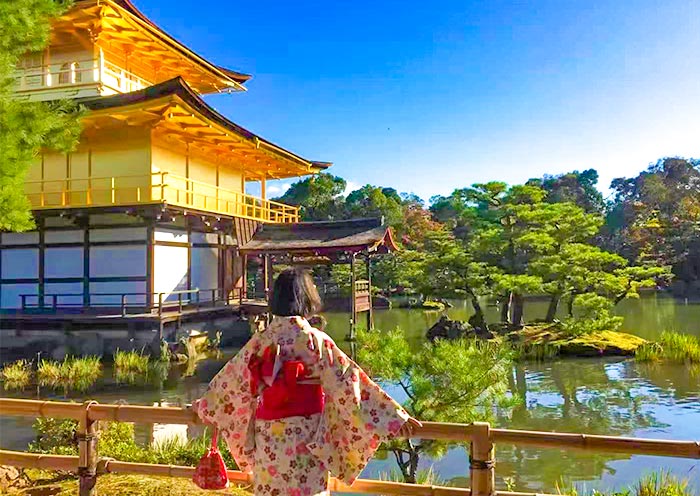
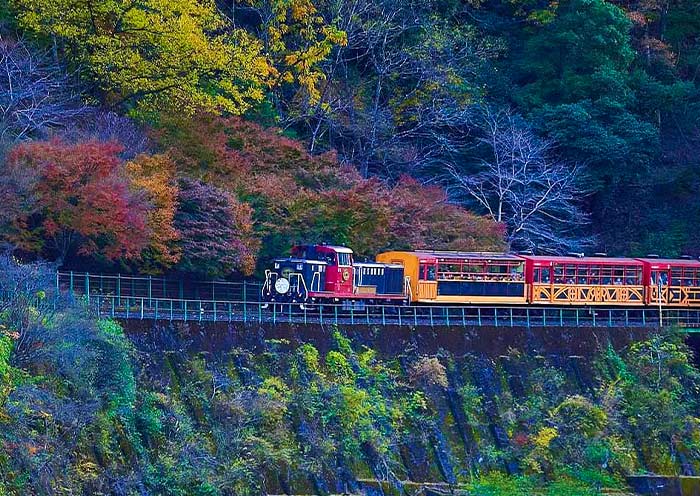
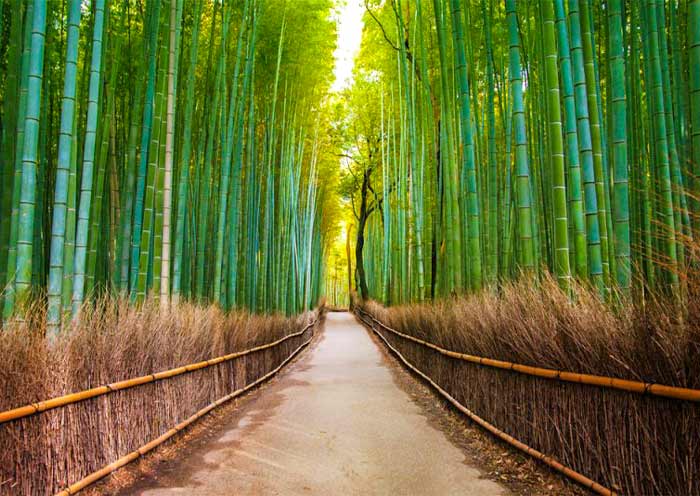
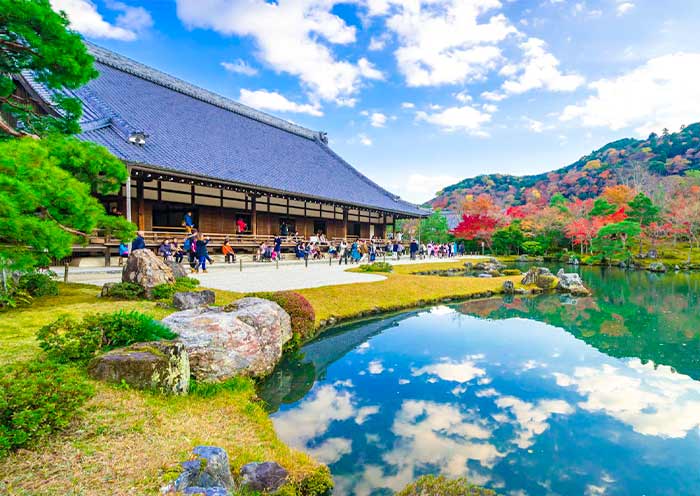
Today, you will depart from Kyoto to Osaka. Along the way, you will visit Nara and Uji to make the most of your day.
Driving to Uji takes about 40 minutes. Uji is renowned for its green tea and is the perfect spot to delve into traditional Japanese tea culture. In the 7th century, Buddhist monks introduced green tea from China to Japan. Initially, monks ground the leaves into a powder to help them stay awake during long periods of meditation. It wasn't until the Kamakura period (1192-1333) that it became a popular beverage. Gradually, green tea powder became a vital ingredient in the tea ceremony, especially popular among the aristocracy.
Visit Byodoin Temple, a Buddhist temple from the Heian period, now listed as a World Heritage Site. Its most famous structure, the Phoenix Hall, is depicted on the Japanese ten-yen coin. Inside the hall, you can find many valuable artworks and relics, including a designated National Treasure, and the statue of Amida Buddha.
The street leading to Byodoin Temple, spanning 300 meters, is Uji's busiest Matcha street, lined with restaurants on both sides. No matter what delicacy you indulge in - be it ice cream or sweets - the unique aroma of green and roasted tea permeates the air. Japan's oldest tea shop is located in Uji.
Uji also has a river sharing the city’s name, the Uji River, which divides the town in two. You can take a leisurely stroll along the river, and visit Uji Bridge, an important setting in the Tale of Genji, now one of Kyoto’s most romantic spots.
Optional Activities: If you want to experience the joy of tea-making firsthand, consider joining a tea workshop in Uji. Learn how to prepare tea, how to grind matcha to perfect fineness, and sample different tea beverages.
After finishing your tour of Uji, head to Nara, just 50 minutes away. Nara holds a special place in Japanese history as the country's first permanent capital, predating Kyoto. Nara boasts eight World Cultural Heritage sites, making it Japan's second most culturally rich city after Kyoto.
Visit Todaiji Temple, one of Japan's most historically significant temples and a UNESCO World Heritage site. It is known for housing the world’s largest bronze statue of the Buddha Vairocana, which stands just over 16m high and consists of 437 tonnes of bronze and 130kg of gold. It represents Vairocana Buddha and is flanked by two Bodhisattvas. Todaiji's main hall, Daibutsu-den (Big Buddha Hall), is one of the world’s largest all-wood buildings, despite the fact that the present reconstruction of 1692 is only two-thirds of the original temple hall's size.
Walk to Nara Park, adjacent to Kasuga Taisha. This park is famous for its hundreds of freely roaming deer, considered messengers of the gods in Shinto tradition. Purchase some shika senbei (deer crackers) to feed the deer as you stroll through the park.
Head to Kasuga Taisha (Kasuga Grand Shrine), Nara’s most celebrated Shinto shrine, another UNESCO World Heritage Site. It is renowned for its lanterns, which have been donated by worshippers. Hundreds of bronze lanterns can be seen hanging from the buildings, while thousands of stone lanterns line its approach and the surrounding woods. These lanterns are lit twice a year during the Lantern Festivals in February and August, creating an ethereal and mesmerizing atmosphere.
After the tour, drive to Osaka (typically takes around 50 minutes) and stay overnight.
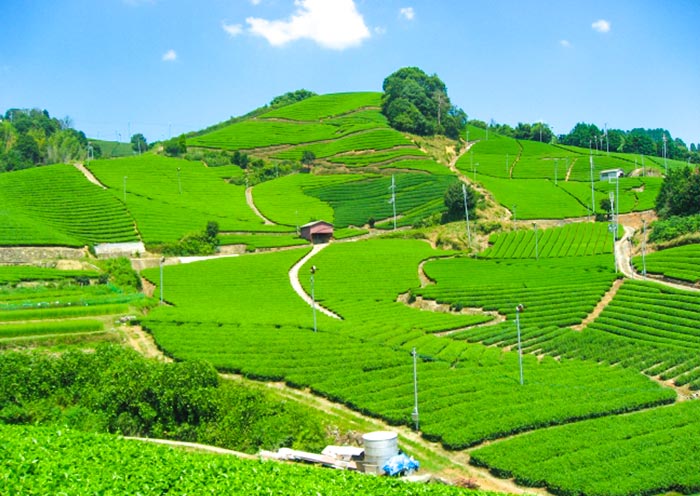
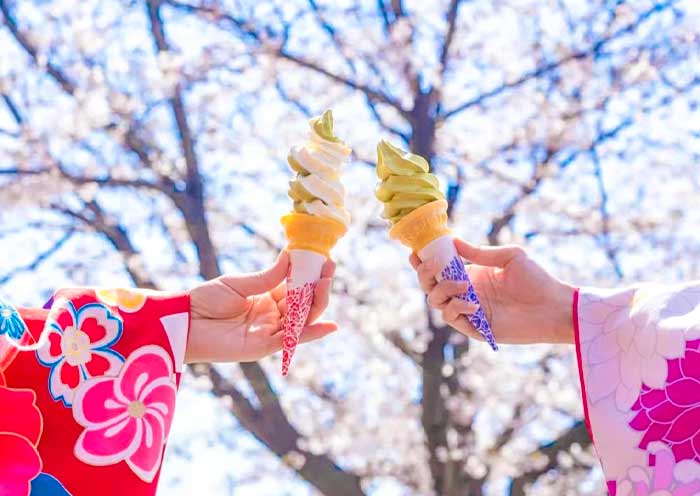
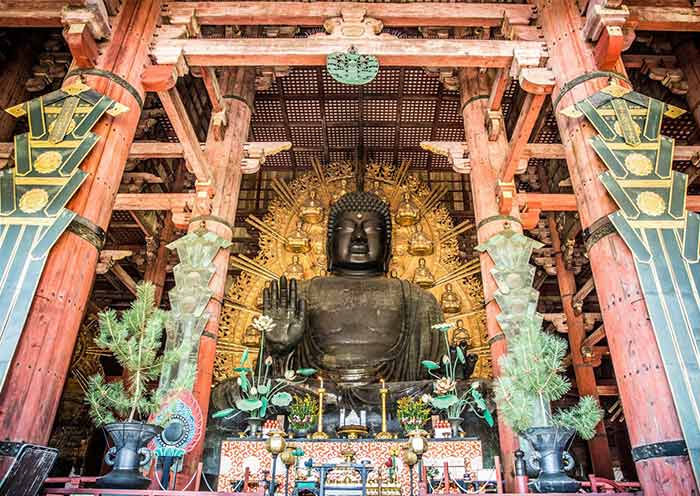
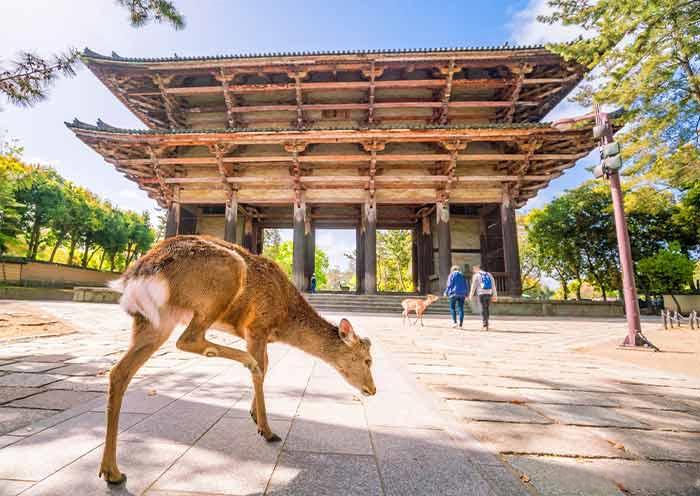
Osaka, Japan's third-largest city, is a great destination for architecture & art. After a morning visit to Osaka Castle Park, you will love to enjoy a 1.5 km City walk at Nakanoshima Island from Nakanoshima Children's Book Forest (Tadao Ando’s Green Apple) to Nakanoshima Museum of Art (Black Cube). Osaka is known as the "Nation's Kitchen", you can explore Shinsaibashi-suji & Dotombori for local food during your Free Time.
Start your day at Osaka Castle Park, one of Japan’s most famous landmarks and a symbol of Osaka’s historical grandeur. Originally built in 1583 by Toyotomi Hideyoshi, a powerful daimyo who aimed to unify Japan, it was the largest castle of its time. After multiple renovations and reconstructions, today's Osaka Castle has been transformed into an open park, covering a total area of 105.6 hectares, making it a must-visit attraction.
Walking into the scenic area of Osaka Castle, you'll be amazed by the massive scale and precision of the moats, gates, and stone walls. The largest stone slab is 11 meters wide, and many stones are inscribed with the crests of the 64 daimyō (feudal lords) tasked with the castle’s construction back in 1620. The most breathtaking feature is the Main Tower (Tenshukaku) of Osaka Castle, which stands tall against the sky at the center of the extensive castle grounds. The castle tower's interior is a museum showcasing artifacts related to Toyotomi Hideyoshi and the castle's history. The observation deck on the 8th floor offers a panoramic view of Osaka Castle Park and the Osaka Plain.
Head to Children's Book Forest (Library), which is located on Nakanoshima Island. The library is a gift from the renowned architect Tadao Ando to the city of Osaka. It is also the first realized project under his "Children's Library Forest" initiative. Tadao Ando aims to create a space where children can distance themselves from electronic devices, explore a diverse world through books, and nurture creativity and curiosity.
At the entrance of the library, you will see a giant green apple art installation called "The Forever Young," designed by Tadao Ando. (PS: There is also a Tadao Ando green apple outside the Hyogo Prefectural Museum of Art in Kobe). The exterior of the library continues Tadao Ando’s signature style of exposed concrete, showcasing the marks of construction holes. The curved building follows the bend of the Nakanoshima riverside, resembling a gentle curve. Inside, there are more ingenious features—the curved walls seamlessly transform into grid-like bookshelves, with book covers facing outward, creating a colorful "book showcase."
Note: The library is free to enter and operates on a reservation system in time slots. There are four sessions per day, each lasting 90 minutes. Online reservations are limited to 100 people, while on-site queueing is limited to 50 people. Visitors are required to arrive 10 minutes in advance.
It is great to enjoy a City walk at Nakanoshima Island - Osaka's cultural gem between two rivers, blends historic architecture with modern art. Home to iconic libraries, museums, and rose gardens, it offers a serene urban oasis where heritage meets contemporary creativity. From Children's Book Forest to Nakanoshima Museum of Art, it is about 1.5 km which along the way you can admire more Architecture of Osaka, such as The Museum of Oriental Ceramics, Osaka City Central Public Hall, Osaka Prefectural Nakanoshima Library, Bank of Japan, Osaka Branch, The National Museum of Art.
After the walk, you will visit the Nakanoshima Museum of Art, designed by the emerging architect Katsuhiko Endo. It quickly became a new artistic landmark in Osaka after its opening in 2022. It is also the first modern art museum in the area. The building's exterior resembles a black cube suspended above a Sandbar, creating a striking visual impact. The ground floor entrance hall is completely open, seamlessly integrating with the urban space. The interior features a tall atrium at its core, with intersecting staircases providing efficient access to various exhibition spaces on different levels, designed for smooth circulation akin to Japan's public transportation system.
The black precast concrete exterior contrasts sharply with the diverse interior spaces. Built near river, artworks are prominently displayed on floors 3-5 for security, while floors 1-2 serve as public areas open to the citizens. The museum houses over 6000 art pieces, especially modern and contemporary art-related collections, such as oil paintings, prints, furniture, posters, etc. At the entrance stands the work "SHIP'S CAT" by contemporary artist Kenji Yanobe, inspired by the "ship's cat" that sailors historically brought aboard ships as guardian spirits during the Age of Exploration.
At Last, you will experience the unique charm of the city through a street food and shopping tour. Enjoy shopping at Shinsaibashi-suji Shopping Street, Osaka's busiest shopping arcade. Then, head to the lively district of Dotonbori, where waterways are lined with luminous advertisements and signs. It's especially glitzy during the holiday season, with decorations strung across the bridges. Full of fantastic restaurants, clubs, and karaoke bars, it's the city's go-to area for entertainment. Take a photo at the iconic Glico Man sign. Try takoyaki, ball-shaped octopus bites, kushikatsu (Japanese deep-fried skewered meat and vegetables), and okonomiyaki, a savory Japanese pancake topped with whatever you like.
Free Time Ideas:
1.Shinsekai & Tsutenkaku Tower: Osaka’s retro district blending nostalgia with neon, home to the iconic 103 m tower (rebuilt 1956) offering panoramic views, Billiken statue for luck, and thrilling sliders. Thriving with kushikatsu stalls and retro eateries, it’s a lively homage to Showa-era charm.
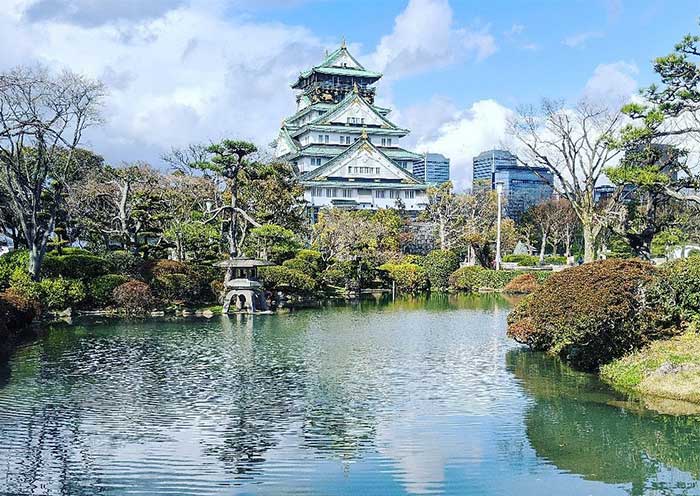
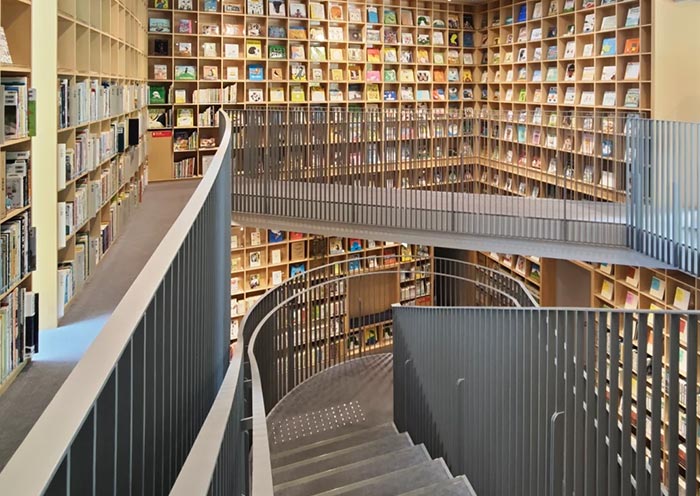
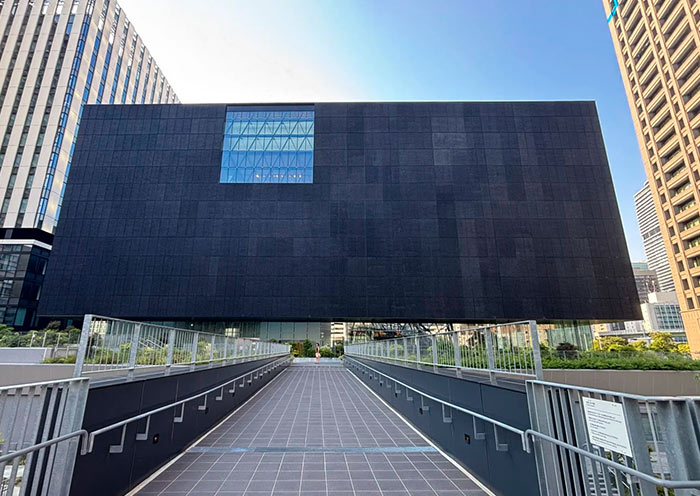
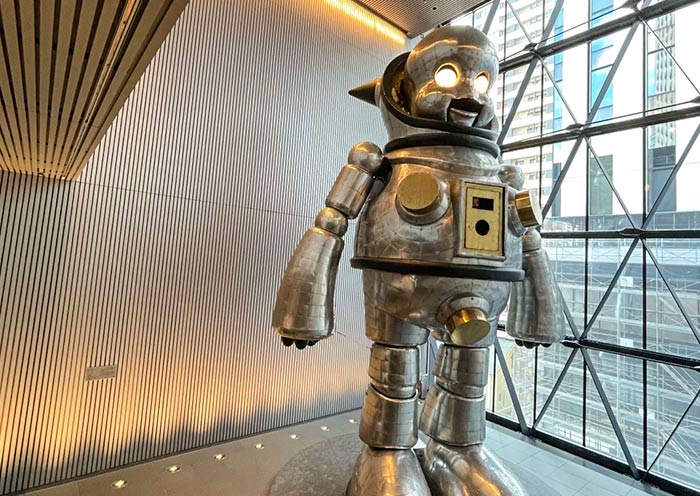
Enjoy a day tour to Naoshima Island. Naoshima, originally a deserted island with a population of about 3,000, has now transformed into the "Island of Contemporary Art," attracting millions of visitors annually. It is not only a pilgrimage site for art enthusiasts but also home to Tadao Ando's architectural philosophies, Yayoi Kusama's avant-garde art, the tranquil beauty of the Seto Inland Sea, and the main stage for the Setouchi Triennale. You may find it a journey of “Less is more”.
Naoshima Island, known as Tadao Ando’s Art Island, is a place where Tadao Ando's architectural designs blend seamlessly with art and nature. From 1990 to 2025, he successively designed and constructed 10 buildings on the island. If you are a fan of Tadao Ando, don't miss visiting his masterpieces, including the Chichu Art Museum, Lee Ufan Museum, and Benesse House Museum.
You'll travel by ferry to this "Art Island," where you can explore its many wonders on foot, by shuttle bus, or by bike. When you get off the ferry, you will be welcomed by Yayoi Kusama's Giant Pumpkin (red one). You will see the yellow one by the end of the tour.
Then, head to visit Chichu Art Museum, a masterpiece by Tadao Ando. It is constructed underground to preserve the scenic beauty of the Seto Inland Sea and embody the concept of "harmony between humans and nature." The exhibition areas within the museum are combined with geometric forms such as triangles, squares, and rectangles, using natural light to delineate the art of space, time, and shadows. It houses 5 masterpieces by Monet (Water Lilies) and works by artists like James Turrell (Open Sky), Walter De Maria (Time/Timeless/No Time), making it a pilgrimage site for architecture enthusiasts. The entrance recreates the authentic atmosphere of Monet's garden. The museum features a café. Visitors are required to change slippers while viewing the exhibitions, and photography is prohibited.
You can hop to Lee Ufan Museum. It is situated next to the Seto Inland Sea, backed by a large mountain, and is a semi-underground building created through the collaboration of architect Tadao Ando and artist Lee Ufan. The museum displays Lee Ufan's paintings, sculptures, and other works from the 1970s to the present day - his creations often involve the use of stone, iron plates, space, and emptiness, representing the "Mono-ha" art movement.
At the core of "Mono-ha" is the relationship between objects: when two objects are placed together, their interaction forms the worldview of art. Walking through the exhibition halls, with simple columns and rough stones, it feels as though they are silently revealing the mysteries of points, lines, and planes. This space is not just an art gallery; it is a philosophical dialogue about the essence of "objects."
After that, time to explore Benesse House Museum. It is a "hotel-museum" designed by Tadao Ando. It is rare and unique - seamlessly integrating indoor and outdoor art, with exhibits scattered along the seaside and mountains. You might be moved by Bruce Nauman's 1984 neon work, "100 live or die," where randomly illuminated colored fonts softly convey messages like "kiss and live," "touch and live," "love and die," and "cry and die." You can also see Yayoi Kusama's "pumpkin" in the open space by the seaside pier, known as the "pumpkin at the end of the world." Symbolic of Naoshima, the Yellow Pumpkin (different from the red pumpkin) often bids farewell to departing visitors under the setting sun. You may see people queue up to take a picture with it.
Enjoy your free time to explore more according to your time and interest, such as Valley Galary, Time Corridors, Art House Project, Ando Museum, Naoshima New Museum of Art...
Notes:
1.Museum Reservations: Some museums require reservations. Contact us for assistance with booking. Also, many museums are closed on Mondays, so it is advisable to avoid visiting on Mondays.
2.Ferry to the Island: It is a must to take the ferry to the island! Double-check the ferry schedule to avoid missing ticket purchase and boarding times. Tickets must be purchased with cash, and ticket windows usually open half an hour before departure. Simply queue up at the designated time to buy your ticket.
3.Island Transportation (self-paid): Electric bicycles are available for rent; interval buses cost 100 yen per ride; the museum shuttle bus is free (circular route).
4.Accommodation Options: You can stay on the island (advanced booking required) or near Takamatsu Port. Contact us to assist with booking.
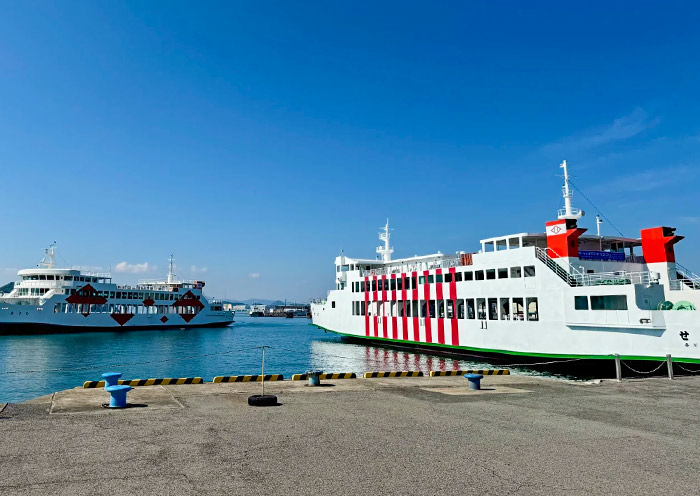
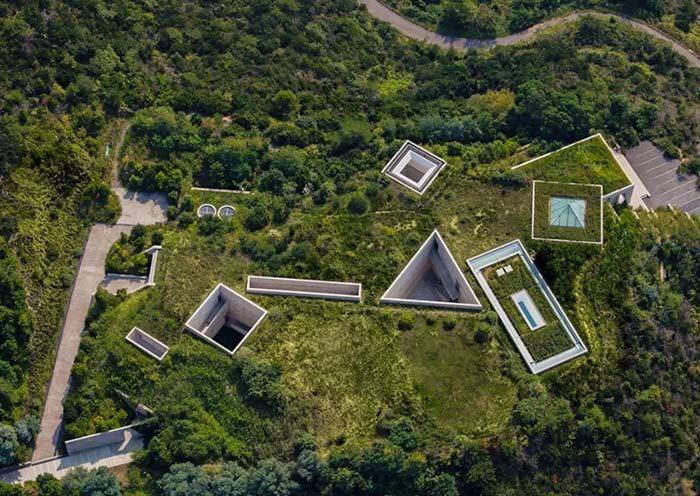
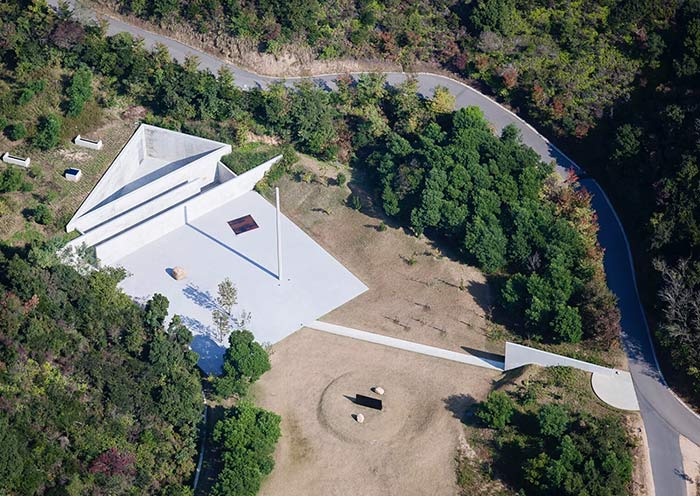
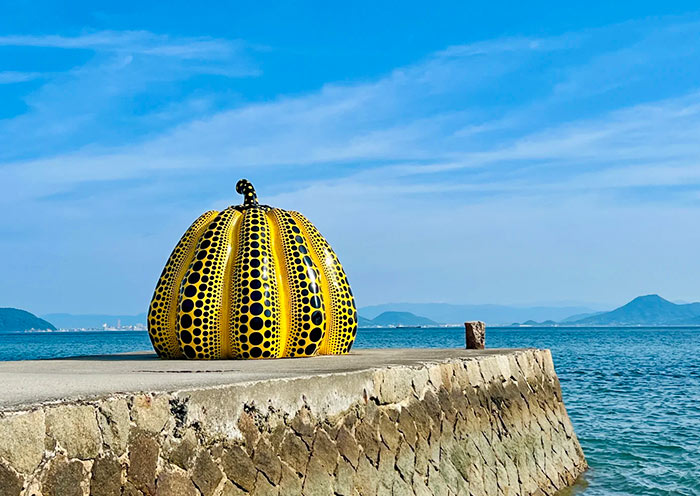
After breakfast, head to Himeji, a charming city nestled in Hyōgo Prefecture. It is renowned for its stunning Himeji Castle, a UNESCO World Heritage Site.
Upon arriving in Himeji, you'll be greeted by the majestic Himeji Castle, often affectionately referred to as the "White Heron Castle" due to its elegant appearance. This iconic structure was built in the 14th century and has served as a symbol of the region for centuries. Throughout its history, it has played a pivotal role in Japanese history, serving as a stronghold for various feudal lords. As you explore Himeji Castle, you'll be captivated by its intricate details and architectural marvels. Climb to the summit of the main tower for breathtaking panoramic views of the city and surrounding landscape. Immerse yourself in the rich history of the castle, learning about the significant events and figures that have shaped its legacy.
Following your exploration of Himeji Castle, venture into the tranquil oasis of Koko-en Garden. This beautifully landscaped Japanese garden offers a peaceful retreat from the bustling city. Stroll through its serene paths, admire the picturesque ponds and waterfalls, and relax in the serene ambiance of the teahouse.
Stay overnight in Osaka.
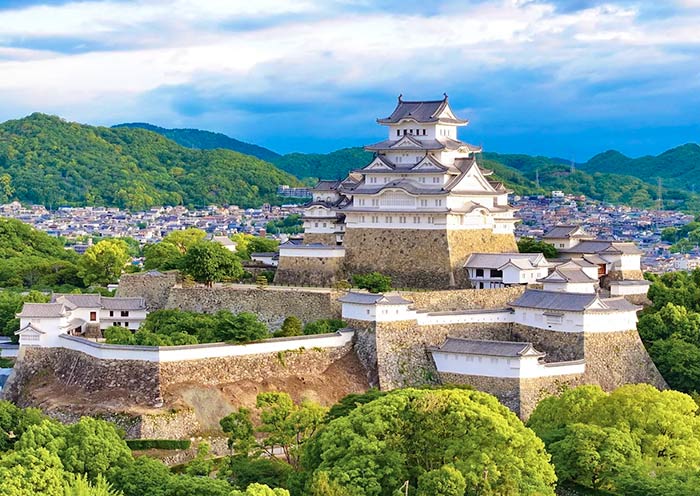
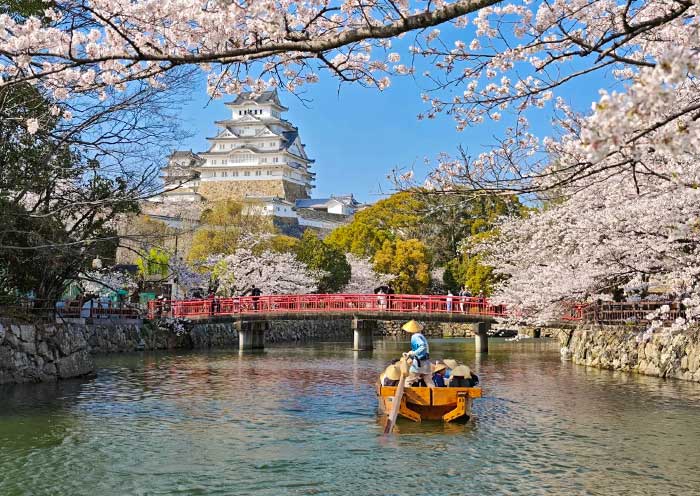
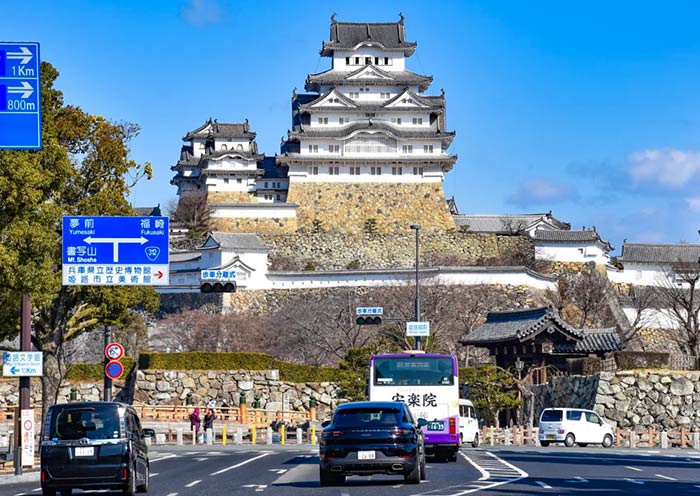
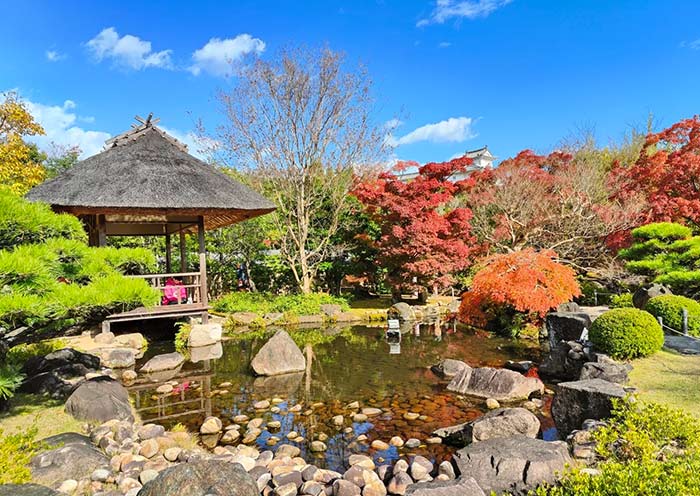
It is time to end your unforgettable 8 Days Japan Architecture Tour. Your driver will ensure a smooth transfer to Kansai International Airport (KIX) or Kansai International Airport (KIX) for your departure flight.
Trip Extension: If you'd like to extend your adventures in Japan, consider exploring other notable regions like Tokyo, Mt. Fuji, Hakone, etc. Feel free to contact us to customize your extended itinerary.
Thank you for choosing Asia Odyssey Travel for your tour of Asia. We are dedicated to enhancing your travel experiences and look forward to welcoming you on your next adventure in Asia. Have a safe journey home!
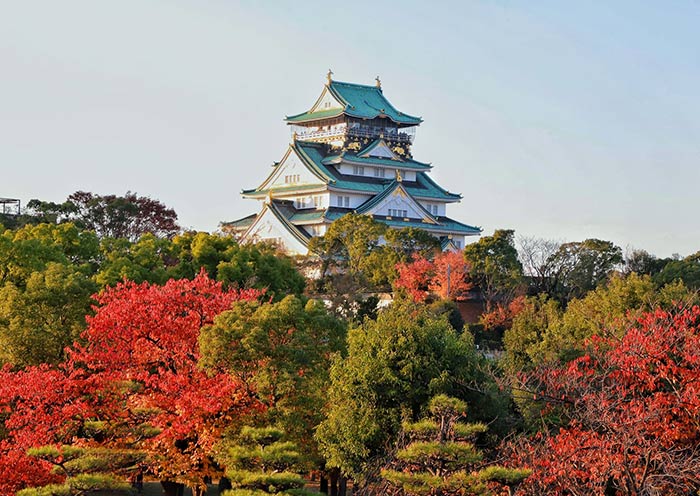

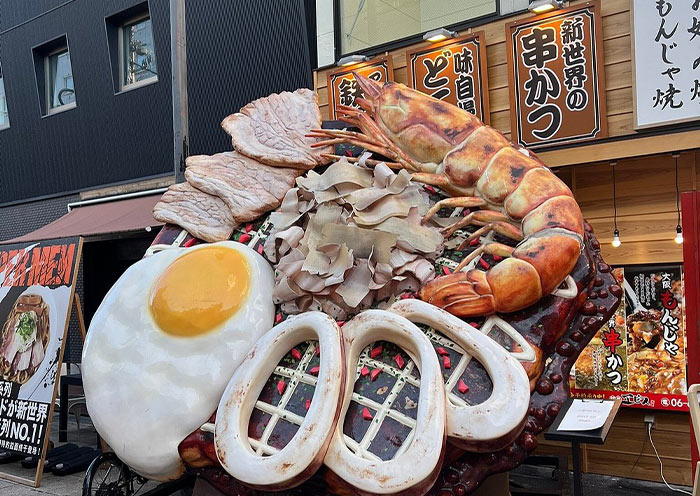
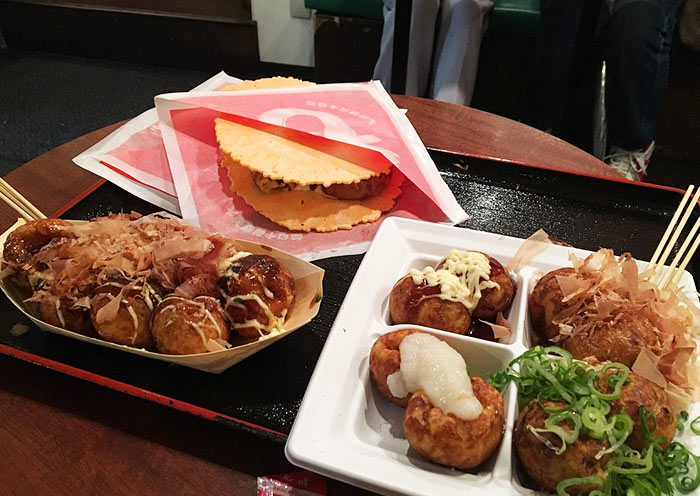
What’s Included & What’s Excluded
What's Included:
What's Excluded:
Important Travel Tips for Visiting Japan
Get the right visa. Depending on your nationality and the length of your stay, you may need to apply for a visa in advance. You can do this online or at a Japanese embassy or consulate. Many countries are part of Japan’s visa exemption program, allowing their citizens to enter Japan for short stays without a visa for tourism. Always check if your country is on this list before applying for a visa. If you have any questions, feel free to contact our travel experts for more information.
The best time to visit Japan depends on your interests:
Spring (March to May): Ideal
for witnessing the cherry blossoms and enjoying mild weather. Major cities like Tokyo, Kyoto, and Hiroshima
are particularly beautiful as cherry trees bloom spectacularly.
Summer (June to
August): Perfect for experiencing vibrant festivals such as Gion Matsuri in Kyoto,
Tanabata Matsuri across the country, and enjoying the natural beauty of Hokkaido, which is less humid than
the rest of Japan. Note that early summer (June) is the rainy season.
Autumn (September to
November): Offers stunning fall foliage, making it a great time for hiking and temple
visits. The weather is cool and pleasant, ideal for outdoor activities.
Winter (December to
February): The best time for winter sports, especially in regions like Hokkaido and the
Japanese Alps. Onsens (hot springs) are also a popular attraction during the cold months.
Bring Cash. Despite advances in digital payment, many smaller vendors, temples, and rural
areas operate predominantly with cash. It’s wise to keep some yen on hand at all
times.
Universal Travel Adapter. Japan uses 100V with two straight thin
pins.
Passport: Ensure it’s valid for at least six months beyond your date
of travel.
Visa (if required): Make sure you have the right visa for your
travel.
Travel Insurance Information: Always good to have on hand.
Bow when greeting: A slight bow is a common way to say hello, thank you, or
sorry.
Be mindful of your noise level: Japanese culture values quietness,
especially in public transportation and residential areas.
Follow the rules: Whether
it's waiting in line or adhering to signage, following local rules and etiquette is highly
valued.
Etiquette in temples and shrines: Wear modest clothing and follow specific
customs such as washing hands and mouth before entering a shrine or temple. Photography might be restricted
in sacred areas.
Looking for more travel guides for first-time visitors to Japan? Want to gather additional information to plan your trip? Our team of professional travel experts has written over 40 articles about Vietnam. Please check out ourJapan Travel Guide for inspiration and detailed insights.
Hotel Conditions for Your Japan Tour
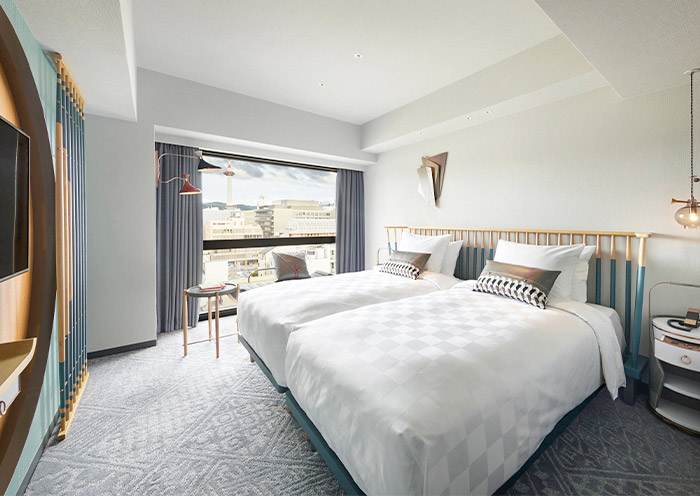

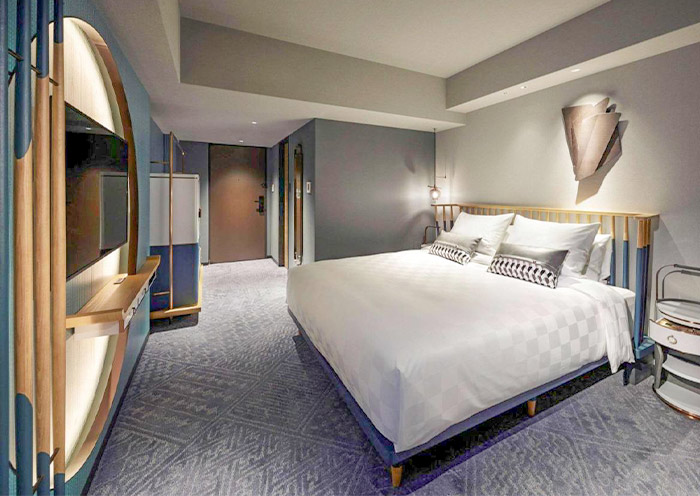
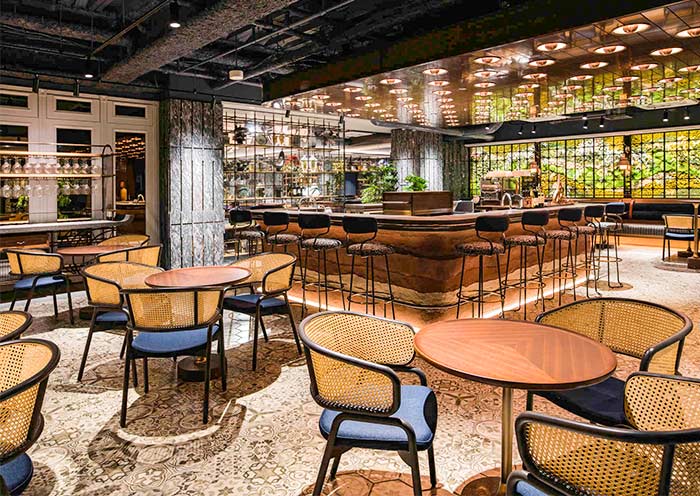
We offer a range of accommodation options to suit various preferences and budgets: luxurious 5-star hotels, comfortable 4-star hotels, and economical 3-star hotels. Our selected hotels are conveniently located close to the city center or popular tourist spots.
For those seeking a more distinctive lodging experience, we also offer Traditional Ryokans, Machiya, Onsen (hot springs) Hotels, etc. If you have specific needs or preferences, please consult with your travel advisor.
Tips: Be aware that hotel room sizes in Japan may be smaller compared to those in other developed countries due to the scarcity of land. If your budget allows, it is recommended to opt for a higher category of hotel, which will generally offer more comfort.
Photo Gallery for This Itinerary
Latest Japan Tours Reviews from Our Customers

Jess
Malaysia
Destination(s): Beijing, Xian, Shanghai, Zhangjiajie
Date of Experience: Sep 04, 2025
Tour Customized by: Yee
You May be Interested in This Tour: 26 Days In-Depth Vietnam China Japan Tour: Ultimate Asia Contrast

Claudia Konrado
Brazil
That’s when a friend recommended Asia Odyssey Travel (AOT), and it was the best decision we made! Not only did they completely customize our entire trip, but they did so at a perfectly reasonable cost. Our travel agent, Abby, was absolutely incredible. She worked tirelessly with us to build out an itinerary, patiently answering all our questions, offering guidance, making changes, and adding new ideas with such care and professionalism. From Disney and Universal for the teens to visits to TeamLab Planets, museums and temples and shopping excursions, ending with a relaxing beach time in Okinawa, Abby worked with us and ensured there was something wonderful for everyone. Even during the trip, she was always available to help and provide support. I truly can’t express how much Abby made a difference in our experience. The entire team at AOT, from the guides to the drivers, was consistently helpful and attentive, ensuring every moment of our journey was smooth and enjoyable. We are so grateful for the wonderful memories created, all thanks to the dedication and expertise of AOT team. We highly recommend them for an exceptional travel experience.
Date of Experience: Jul 01, 2025
Tour Customized by: Abby
You May be Interested in This Tour: Customized Tour

Cheers
Britain
I’m so glad we chose to do this tour! We were looking for a way to escape the summer heat, and Hokkaido was a dream come true. The air was so fresh and the scenery was just incredible—I swear my photos don’t even do it justice.
The highlight for me was definitely the lavender fields in Furano. They were even more beautiful in person than in all the pictures you see online. Our private guide knew the best spots to get a great view without fighting the crowds. Plus, we got to see all the other rainbow flower fields in Biei which were just as amazing.
The trip was super relaxing because we didn't have to worry about a thing. Our driver was so professional, and it was a huge relief to have a private car just for our family. It made getting between all the different towns so easy. We loved exploring the charming canal in Otaru and getting to eat all the fresh seafood in Sapporo. The food in Hokkaido is seriously on another level!
Date of Experience: Jun 10, 2025
Tour Customized by: Cheers
You May be Interested in This Tour: 8 Days Hokkaido Summer Tour: Colorful Family Vacation on Hokkaido Island
Price: From USD Request pp
(Based on a private tour for 6 persons staying in 4-star hotels. Prices may vary depending on the itinerary, travel dates, and group size. )
(Book at least 6 months in advance)
